|
The Film
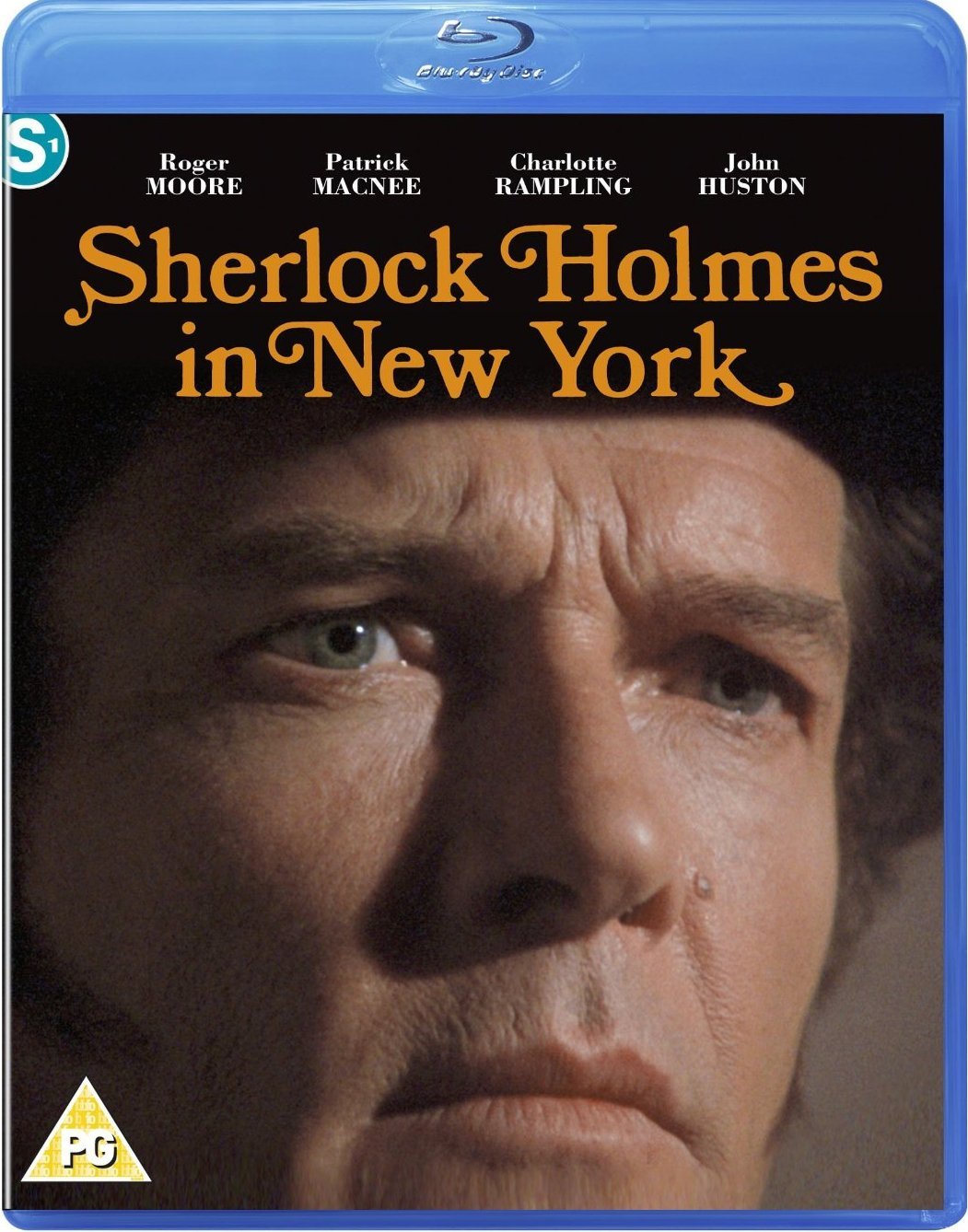
 Sherlock Holmes in New York (Boris Sagal, 1976) Sherlock Holmes in New York (Boris Sagal, 1976)
Produced for American television and broadcast on NBC in 1976, Sherlock Holmes in New York (directed by Boris Sagal) features a cast rich in talent (Roger Moore as Holmes; John Huston as Holmes’ nemesis, Moriarty; Charlotte Rampling as Irene Adler; Patrick Macnee as Watson). Made in a period (the late-1960s and early- to mid-1970s) in which there seemed to be a strong revival of interest in Sir Arthur Conan Doyle’s creation of the famous consulting detective Sherlock Holmes, like a number of its contemporaries Sherlock Holmes in New York takes a revisionist approach to the character – though its revisions are far less aggressive than Billy Wilder’s The Private Life of Sherlock Holmes (1970), for example. Where Wilder’s film foregrounded Holmes’ cocaine addiction and sexual ambiguity, the plot of Sherlock Holmes in New York hinges on the suggestion – never stated directly, but heavily implied – that Holmes sired a son by the singer and actress Irene Adler, a character who only appeared in one of Conan Doyle’s Holmes stories (the 1891 story ‘A Scandal in Bohemia’) but recurs throughout many of the later original narratives based on Conan Doyle’s Holmes tales.
The film begins in 1901, with Holmes (Moore) foiling a plot by Moriarty (Huston) to assassinate Lord Brackish. Moriarty vows his revenge, promising not to destroy Holmes but rather to tarnish the famous consulting detective’s reputation forever. Three nights later, Holmes mysteriously receives three shredded theatre tickets, which lead Holmes and Watson (Macnee) to travel to New York, where Irene Adler (Rampling) is performing on the stage.
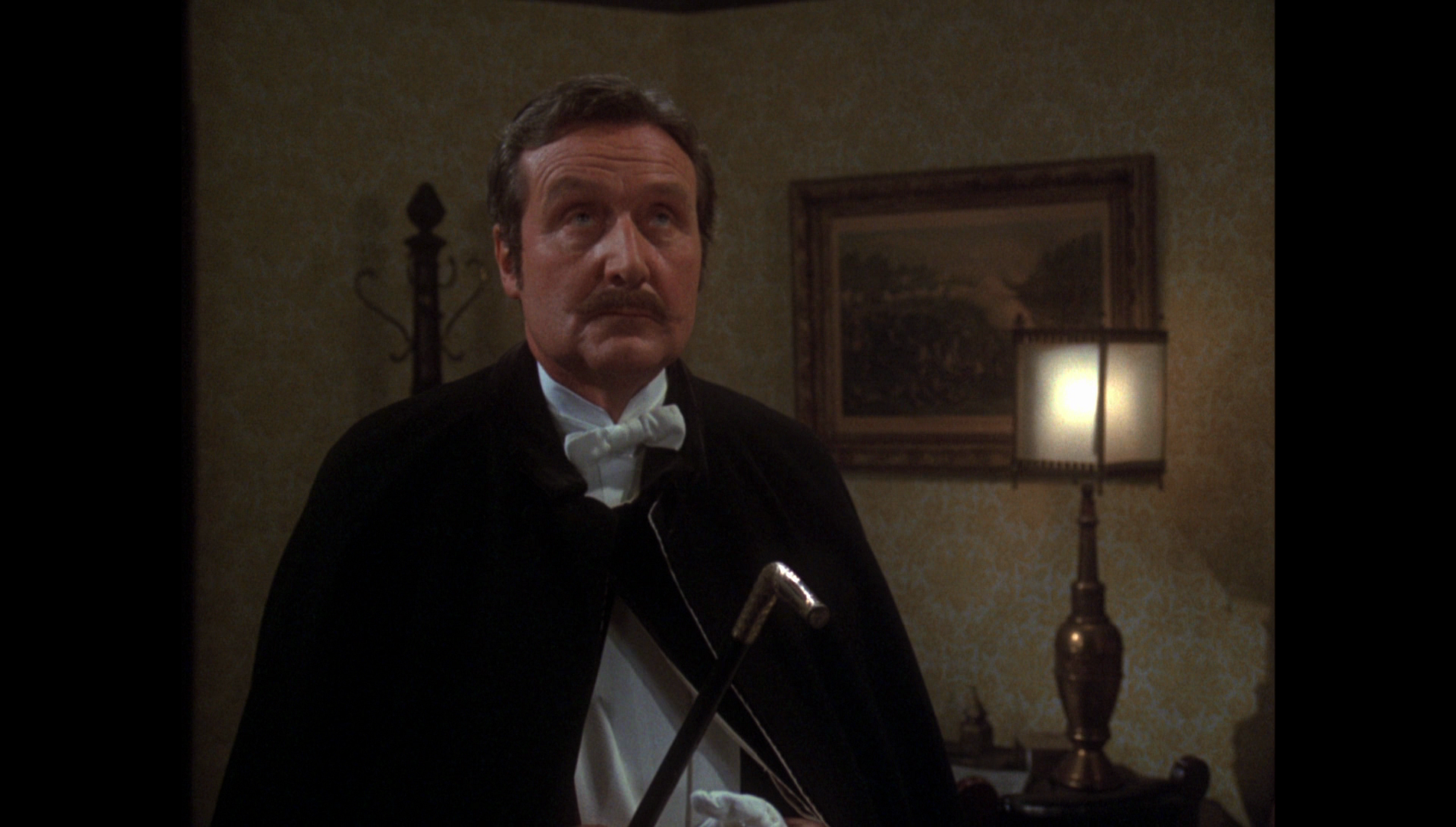 Arriving in New York, Holmes and Watson discover Irene’s performance has been cancelled. Concerned, Holmes visits Irene at her home and discovers that her young son, Scott Adler (Geoffrey Moore), has been abducted. Whilst at Irene’s home, Holmes soon receives a mysterious note from Moriarty, telling Holmes not to co-operate with the police – or else the boy will be harmed. Leaving Irene’s home, Holmes is approached by Mortimer McGrew (Gig Young) and Inspector Lafferty (David Huddleston), who ask Holmes to investigate the disappearance of a large amount of gold bullion from the International Gold Exchange. The theft of this gold could, Holmes is told, result in the outbreak of a world war. The only solution to this dilemma, Holmes reasons, is to somehow rescue Scott Adler from Moriarty’s grasp before solving the case of the missing gold bullion. Arriving in New York, Holmes and Watson discover Irene’s performance has been cancelled. Concerned, Holmes visits Irene at her home and discovers that her young son, Scott Adler (Geoffrey Moore), has been abducted. Whilst at Irene’s home, Holmes soon receives a mysterious note from Moriarty, telling Holmes not to co-operate with the police – or else the boy will be harmed. Leaving Irene’s home, Holmes is approached by Mortimer McGrew (Gig Young) and Inspector Lafferty (David Huddleston), who ask Holmes to investigate the disappearance of a large amount of gold bullion from the International Gold Exchange. The theft of this gold could, Holmes is told, result in the outbreak of a world war. The only solution to this dilemma, Holmes reasons, is to somehow rescue Scott Adler from Moriarty’s grasp before solving the case of the missing gold bullion.
As the film begins, Holmes is in disguise as Colonel Moran, one of Moriarty’s accomplices; this is how Holmes steals his way into Moriarty’s lair. The film foregrounds Holmes’ tendency in the stories to don disguises, offering one camp spectacle (Moore disguised as Italian escapologist The Great Bandini, complete with prosthetic appliances and applied facial hair) followed by another (Moore masquerading as an eccentric Victorian protestor, dressed as Jesus and carrying a placard reading ‘Repent. The End is Nigh’ – which he hands to one of Moriarty’s associates, telling him to heed the words upon it). The theme of performance and stagecraft is thus placed front-and-centre, reinforced through Irene Adler’s role as a singer and actress. In New York, after becoming aware that Holmes has arrived and fallen into his trap, Moriarty underscores the film’s focus on theatrics and performance when he declares, ‘Act One. The cast is assembled. The play begins’.
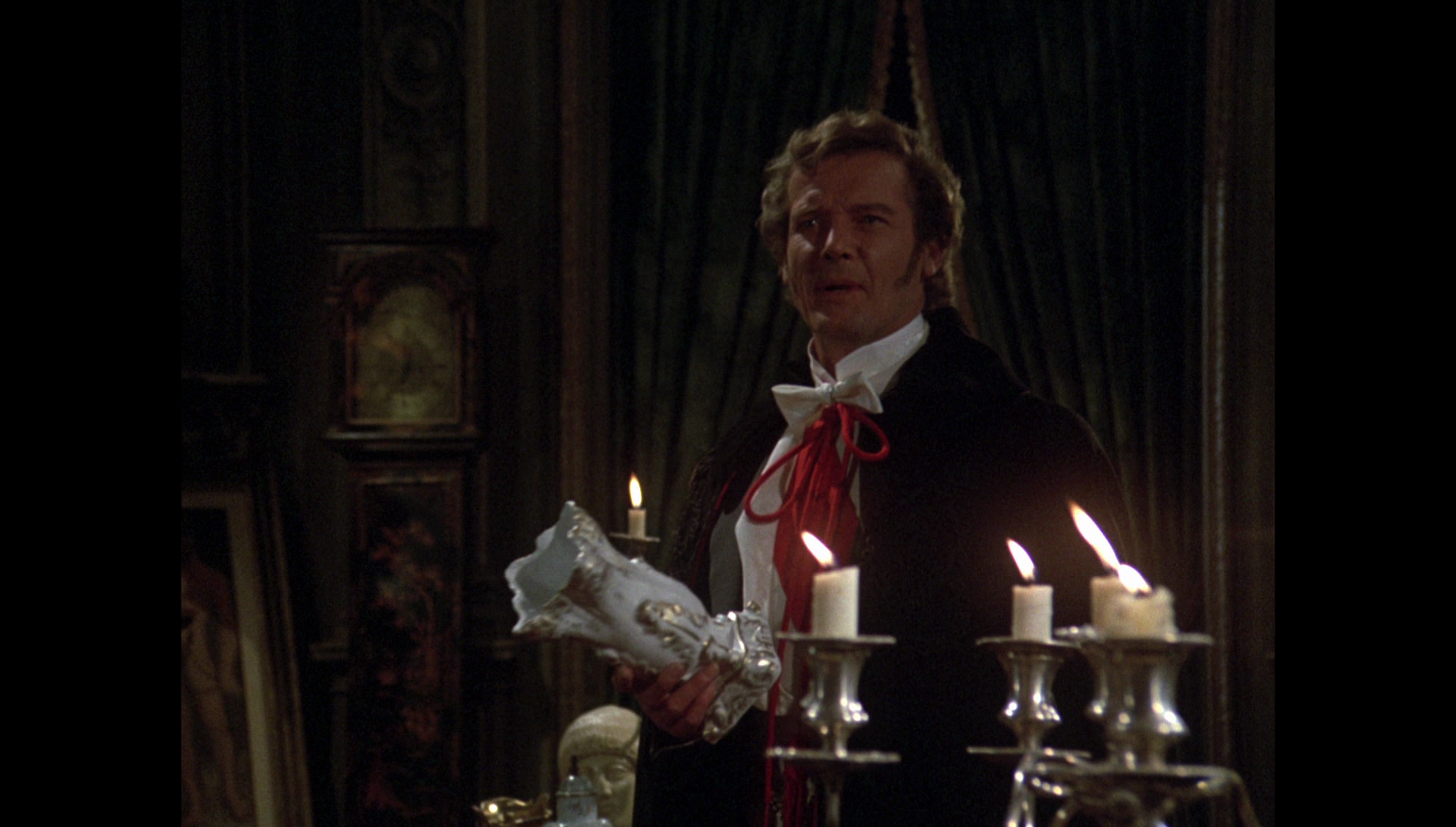 Huston adopts a coarse, almost rustic accent for Moriarty which clashes with Moore’s eloquent diction, suggesting that the differences between them are based upon their very different beginnings and social attitudes: Holmes is associated with refinement, gentility and the good taste of the upper classes, whereas Moriarty is allied with a lack of refinement, greed and proletarian vulgarity. The filmmakers make a strong attempt to foreground this in Holmes’ response to the décor of Moriarty’s hideouts in both London and New York. When Holmes invades Moriarty’s den at the start of the film, Holmes criticises the décor, suggesting that it is vulgar and tasteless; later, when Holmes enters the new base of operations Moriarty has established in New York, Holmes comments that Moriarty has furnished this space exactly the same as his hideout in London (it’s the same set, in truth), and that it is decorated in equally poor taste. In the first of their confrontations, Moriarty underscores this difference in taste and refinement, connecting it with Holmes’ love of theatrics: Moriarty criticises Holmes’ ‘West End ways, talking down your upper-class nose, and only happy when you’re dressing up as someone else as though life was some schoolboy lark’. Huston adopts a coarse, almost rustic accent for Moriarty which clashes with Moore’s eloquent diction, suggesting that the differences between them are based upon their very different beginnings and social attitudes: Holmes is associated with refinement, gentility and the good taste of the upper classes, whereas Moriarty is allied with a lack of refinement, greed and proletarian vulgarity. The filmmakers make a strong attempt to foreground this in Holmes’ response to the décor of Moriarty’s hideouts in both London and New York. When Holmes invades Moriarty’s den at the start of the film, Holmes criticises the décor, suggesting that it is vulgar and tasteless; later, when Holmes enters the new base of operations Moriarty has established in New York, Holmes comments that Moriarty has furnished this space exactly the same as his hideout in London (it’s the same set, in truth), and that it is decorated in equally poor taste. In the first of their confrontations, Moriarty underscores this difference in taste and refinement, connecting it with Holmes’ love of theatrics: Moriarty criticises Holmes’ ‘West End ways, talking down your upper-class nose, and only happy when you’re dressing up as someone else as though life was some schoolboy lark’.
Moriarty’s response to the fact that Holmes has foiled his attempted assassination of Lord Brackish is to threaten to destroy Holmes – but not to kill him, rather to destroy his reputation. In the context of the class differences that the film deftly establishes between Holmes and Moriarty, Moriarty’s words resound with class envy. Moriarty promises Holmes that ‘I’m going to crush you, so that your humiliation and downfall will be witnessed by the entire world’: Moriarty aims to do this by staging ‘the crime of the century, the past centuries and all the centuries to come’. To Watson, Holmes reasons that Moriarty will exploit a ‘chink’ in Holmes’ armour. ‘Rubbish!’, Watson exclaims, ‘There’s no such thing as a chink in your armour’. ‘Isn’t there, Watson?’, Holmes asks in response, ‘Isn’t there?’
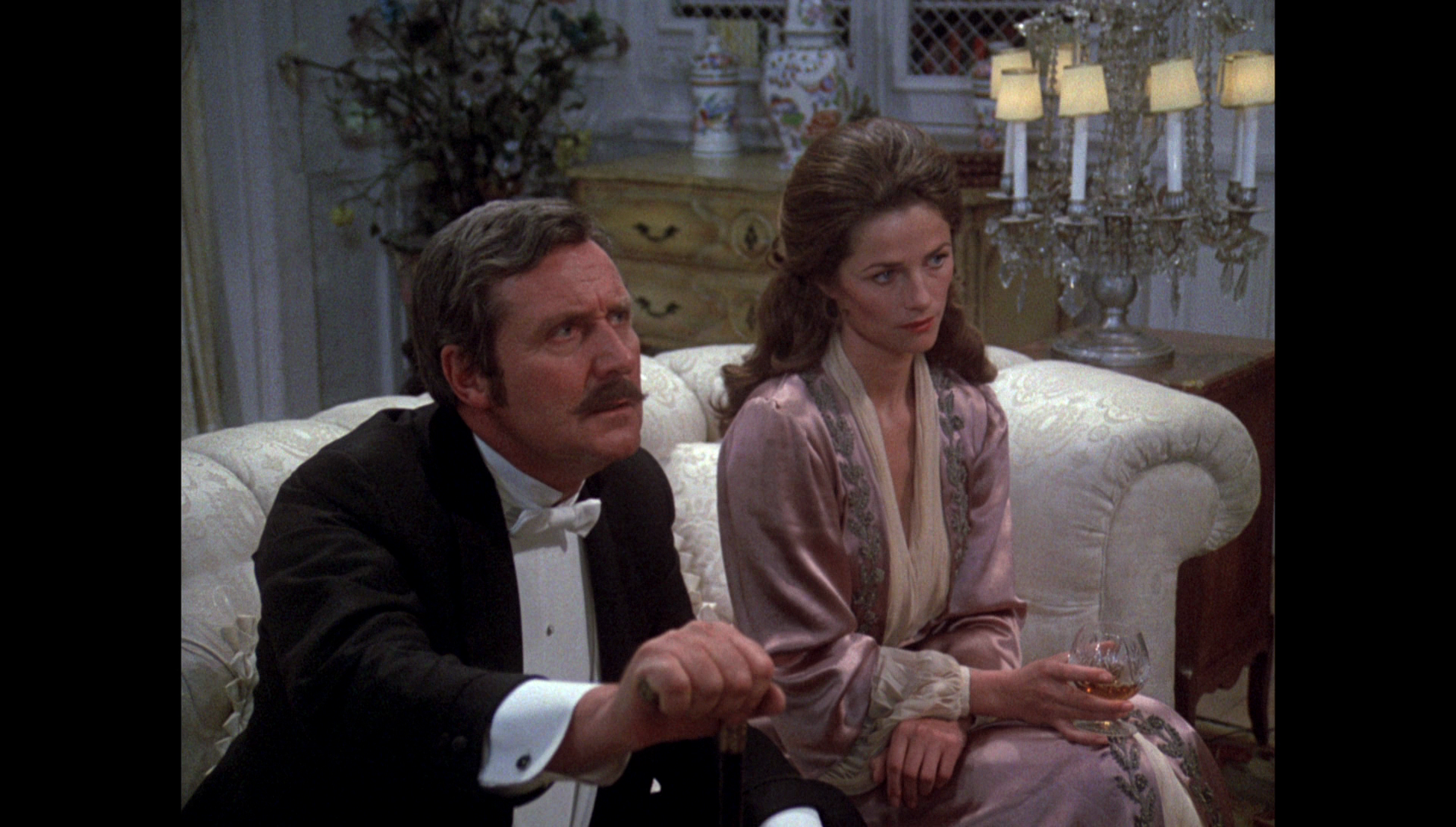 The ‘chink’ in Holmes’ armour is of course Scott Adler, Irene’s young son. Although the dialogue never states it directly, the film strongly suggests that Scott is also the son of Holmes: Holmes demonstrates a strong, paternal instinct to rescue the boy from Moriarty’s kidnappers, and Irene makes a point of telling Holmes that Scott shares his interests (music and solving puzzles) with Holmes himself. Moriarty’s abduction of Scott is intended to prevent Holmes from co-operating with the police in the case of the theft of the gold bullion from the International Gold Exchange. Moriarty intends for Holmes to bear the brunt of the consequences of this action – which as Lafferty and McGrew suggest, could lead to the outbreak of a world war. ‘What’s the world going to think of the “great” Sherlock Holmes then?’, Lafferty asks. Later, talking with Watson, Holmes observes that ‘Every single thing Moriarty promised has come true: the crime of the century has been committed and I am helpless to do anything about it’. The ‘chink’ in Holmes’ armour is of course Scott Adler, Irene’s young son. Although the dialogue never states it directly, the film strongly suggests that Scott is also the son of Holmes: Holmes demonstrates a strong, paternal instinct to rescue the boy from Moriarty’s kidnappers, and Irene makes a point of telling Holmes that Scott shares his interests (music and solving puzzles) with Holmes himself. Moriarty’s abduction of Scott is intended to prevent Holmes from co-operating with the police in the case of the theft of the gold bullion from the International Gold Exchange. Moriarty intends for Holmes to bear the brunt of the consequences of this action – which as Lafferty and McGrew suggest, could lead to the outbreak of a world war. ‘What’s the world going to think of the “great” Sherlock Holmes then?’, Lafferty asks. Later, talking with Watson, Holmes observes that ‘Every single thing Moriarty promised has come true: the crime of the century has been committed and I am helpless to do anything about it’.
Although the film itself feels very much like a quick television production, shot on sets inherited from Hello, Dolly! (Gene Kelly, 1969), with flat lighting and photography that favours side-on medium shots, the narrative is enlivened by the presence of some very good actors: Roger Moore was obviously, at this stage in his career riding the crest of the James Bond wave (Moore’s third picture as James Bond, The Spy Who Loved Me, was released a year later, in 1977); Patrick Macnee, who after The Avengers (1961-9) became a regular face on US television programmes such as Columbo (1971-2003) gives a fine performance as Watson; Gig Young appears in a minor role; Charlotte Rampling plays Irene Adler; and, of course, Moriarty is here essayed by the great director and actor John Huston.
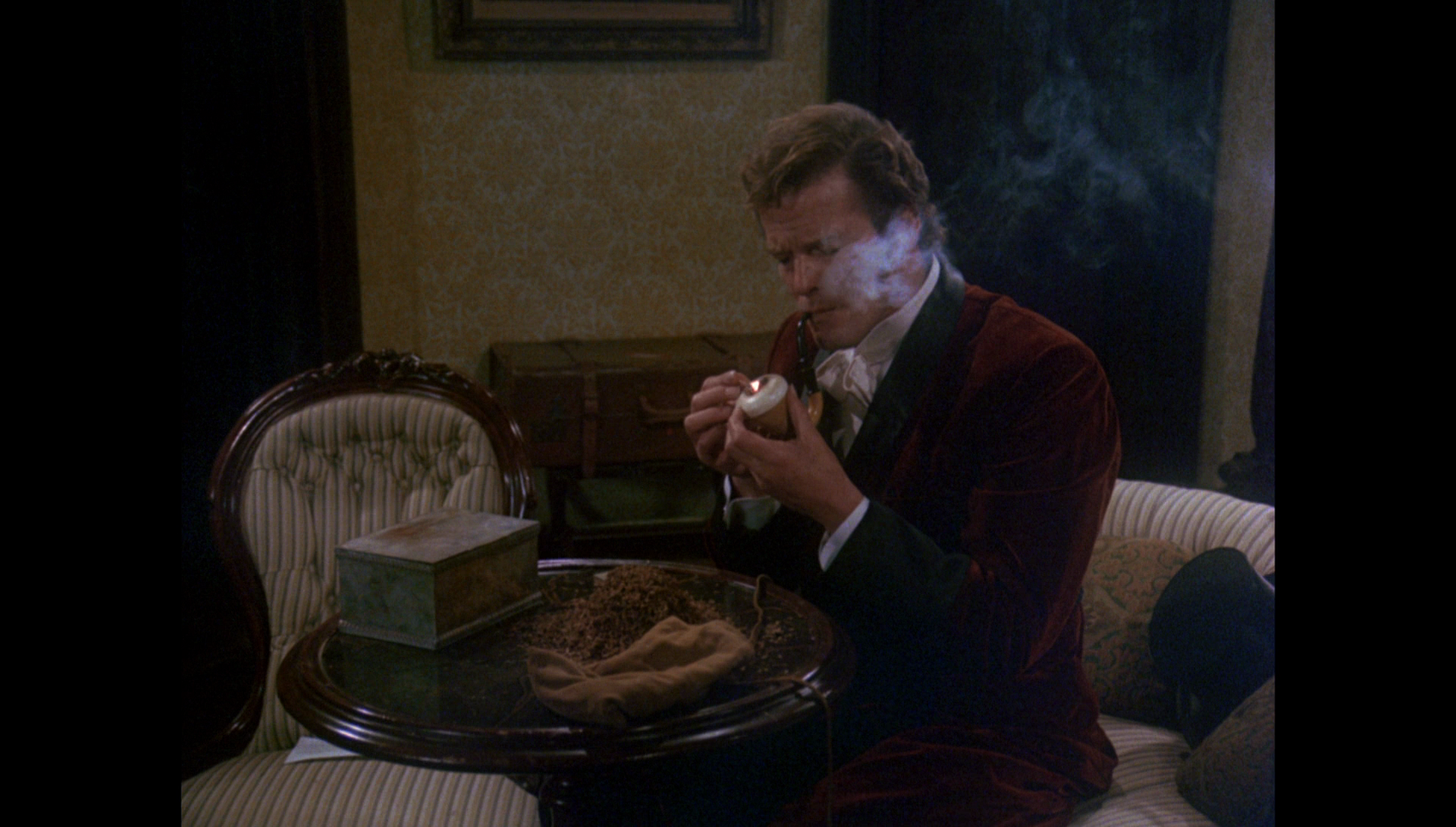 Moore is handsome in the part, and as a matter of fact, other than the period setting there’s little to distinguish Moore’s Holmes from the actor’s incarnation as Simon Templar in The Saint (1962-9). Much of the pleasure comes from Patrick Macnee’s performance as Watson and his interactions with Moore’s Holmes. All bluster, Macnee’s Watson demonstrates a shocking lack of cultural awareness and is constantly bemused by America. Arriving in New York, Holmes and Watson witness the construction of the subway. ‘What’s a “subway”?’, Watson asks. ‘It’s their word for “underground”’, Holmes tells him. Shortly afterwards, shocked by the gruff attitudes of the New Yorkers they have encountered, Watson declares, ‘To think we fought a war to keep these barbarians in the Commonwealth!’ Later, whilst awaiting Irene Adler’s stage performance (which it is revealed is cancelled, owing to the abduction of Scott), Watson looks around the theatre and declares in amazement, ‘Holmes, there’s not a Red Indian in the entire place!’ ‘I had noticed’, Holmes responds dryly. Moore’s performance in this scene suggests he tolerates Watson like a parent might tolerate a wearying child. Moore is handsome in the part, and as a matter of fact, other than the period setting there’s little to distinguish Moore’s Holmes from the actor’s incarnation as Simon Templar in The Saint (1962-9). Much of the pleasure comes from Patrick Macnee’s performance as Watson and his interactions with Moore’s Holmes. All bluster, Macnee’s Watson demonstrates a shocking lack of cultural awareness and is constantly bemused by America. Arriving in New York, Holmes and Watson witness the construction of the subway. ‘What’s a “subway”?’, Watson asks. ‘It’s their word for “underground”’, Holmes tells him. Shortly afterwards, shocked by the gruff attitudes of the New Yorkers they have encountered, Watson declares, ‘To think we fought a war to keep these barbarians in the Commonwealth!’ Later, whilst awaiting Irene Adler’s stage performance (which it is revealed is cancelled, owing to the abduction of Scott), Watson looks around the theatre and declares in amazement, ‘Holmes, there’s not a Red Indian in the entire place!’ ‘I had noticed’, Holmes responds dryly. Moore’s performance in this scene suggests he tolerates Watson like a parent might tolerate a wearying child.
Elsewhere, archaic cultural attitudes are presented ironically, with the intention of providing the viewer with a similarly strong sense of dry humour to that found in many episodes of The Saint. Investigating the circumstances surrounding the abduction of Scott, who was snatched from the care of his nanny, Holmes reasons that the abductor must have been a woman owing to the fact that the nanny was grabbed by the hair and this is an ‘instinctive’ gesture amongst women. Later, when Holmes finally identifies Scott’s abductor as Nicole Romaine (Maria Grimm), a French woman, Holmes tells Romaine that she must co-operate with him or ‘be held accountable for the death of Scott Adler’. ‘Oh, mon dieu!’, Romaine declares. ‘Yes’, Holmes says, ‘If I were French I would have said the same thing myself’. A viewer might almost expect Moore to turn to the camera and wink, Simon Templar’s iconic halo forming above his head and Edwin Astley’s music appearing on the audio track.
Video
 The film is uncut and runs for 98:57 mins. The disc presents the viewer with the option of watching the film in its as-broadcast ratio of 1.37:1 or an alternate presentation in the theatrical aspect ratio of 1.78:1. Both versions are presented in 1080p using the AVC codec. The former (1.37:1) presentation is more natural and in fitting with the film’s production context; the 1.78:1 presentation features some awkward compositions which are noticeably tight along the vertical axis, but it’s interesting to have nonetheless. It’s a solid presentation whose deficiencies come from the context of the film’s production. There’s a good albeit not stunning level of detail present here, certainly above any pre-HD era presentation of the film. Colour consistency here is good and contrast is also pleasing, given the characteristics of the film’s original photography – but given the way the sets were lit, detail is sometimes lost in the shadows and there’s a murky cheapness to the photography and lighting at times. It’s obviously a television production, entirely studiobound and featuring flat, low contrast photography, and this presentation reflects that and would seem to be faithful to the film’s original photography. The film is uncut and runs for 98:57 mins. The disc presents the viewer with the option of watching the film in its as-broadcast ratio of 1.37:1 or an alternate presentation in the theatrical aspect ratio of 1.78:1. Both versions are presented in 1080p using the AVC codec. The former (1.37:1) presentation is more natural and in fitting with the film’s production context; the 1.78:1 presentation features some awkward compositions which are noticeably tight along the vertical axis, but it’s interesting to have nonetheless. It’s a solid presentation whose deficiencies come from the context of the film’s production. There’s a good albeit not stunning level of detail present here, certainly above any pre-HD era presentation of the film. Colour consistency here is good and contrast is also pleasing, given the characteristics of the film’s original photography – but given the way the sets were lit, detail is sometimes lost in the shadows and there’s a murky cheapness to the photography and lighting at times. It’s obviously a television production, entirely studiobound and featuring flat, low contrast photography, and this presentation reflects that and would seem to be faithful to the film’s original photography.
Please see the screengrabs at the bottom of this review for a direct comparison of frames from the 1.37:1 version with corresponding frames from the 1.78:1 presentation.
Audio
Audio is here presented via a LPCM 1.0 track. This is clear throughout, though there’s some hiss and crackle here and there. Good range is evident within this track. It is accompanied by optional English subtitles for the Hard of Hearing. These are easy to read but contain some minor typographical errors at times (eg, at one point the word ‘tremendous’ is written as ‘tremedous’).
Extras
 The disc includes an audio commentary with Roger Moore and Henry Holland. Roger Moore is in great form in this commentary, telling Henry Holland to ‘drop the “Sir”’ and just refer to him as ‘Your Grace’. Moore discusses the origins of the production and some of the casting decisions. Moore suggests that Oliver Reed was originally in line to play Moriarty, before the part went to John Huston. Moore jokes that when he was approached to play Holmes, he thought ‘Why not, another fictional character? I’m going to play them all the same; it doesn’t matter if I’m called Simon, Sherlock or Mr Bond’. It’s an excellent commentary, and Moore is a warm presence throughout. The disc includes an audio commentary with Roger Moore and Henry Holland. Roger Moore is in great form in this commentary, telling Henry Holland to ‘drop the “Sir”’ and just refer to him as ‘Your Grace’. Moore discusses the origins of the production and some of the casting decisions. Moore suggests that Oliver Reed was originally in line to play Moriarty, before the part went to John Huston. Moore jokes that when he was approached to play Holmes, he thought ‘Why not, another fictional character? I’m going to play them all the same; it doesn’t matter if I’m called Simon, Sherlock or Mr Bond’. It’s an excellent commentary, and Moore is a warm presence throughout.
Overall
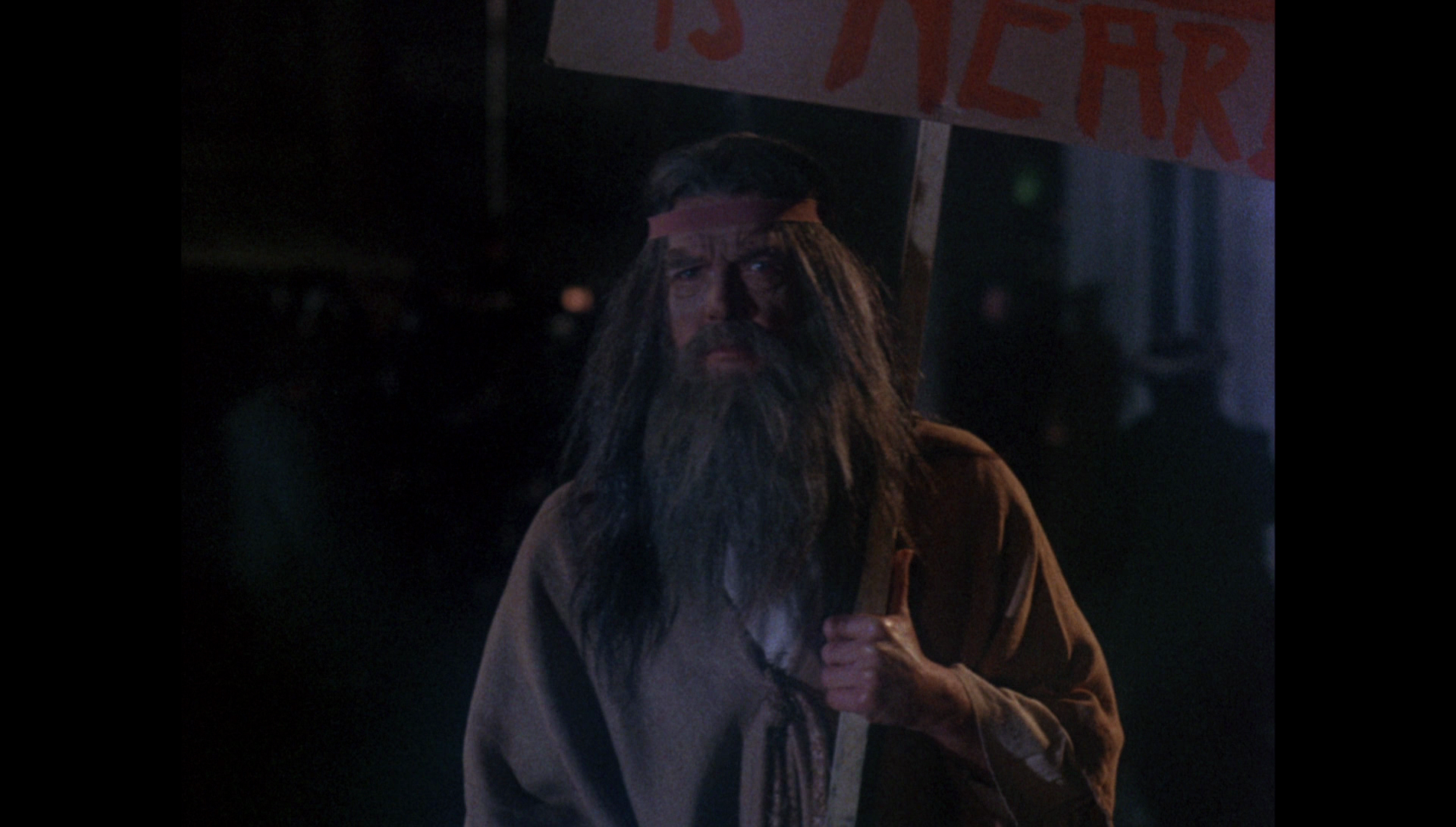 Exceptionally camp in places (Moore’s playful disguise as the Italian escapologist The Great Bandini is a highlight), Sherlock Holmes in New York features the flat lighting and photography of a television production but some excellent sets (inherited from Hello, Dolly!) and a very good cast. Despite the moments of brevity (‘Holmes, over here tea comes in pouches’, Watson declares in astonishment during one scene), the whole thing builds towards a rather bittersweet denouement. It’s a fun example of Holmesiana, though as noted above at times it feels rather more like a special feature length episode of The Saint but with a period setting. Exceptionally camp in places (Moore’s playful disguise as the Italian escapologist The Great Bandini is a highlight), Sherlock Holmes in New York features the flat lighting and photography of a television production but some excellent sets (inherited from Hello, Dolly!) and a very good cast. Despite the moments of brevity (‘Holmes, over here tea comes in pouches’, Watson declares in astonishment during one scene), the whole thing builds towards a rather bittersweet denouement. It’s a fun example of Holmesiana, though as noted above at times it feels rather more like a special feature length episode of The Saint but with a period setting.
Taking into account that the film was shot for American television, with flat lighting and uninspiring photography, this Blu-ray release offers a solid presentation of the main feature that is faithful to the material and is most likely the best the film has ever looked. The limitations here would seem to be limitations of the original production. The commentary with Roger Moore is an excellent, entertaining document of the film’s production. Moore’s fans, and devotees of Conan Doyle’s famous consulting detective, will find much to enjoy here.
1.33:1 presentation
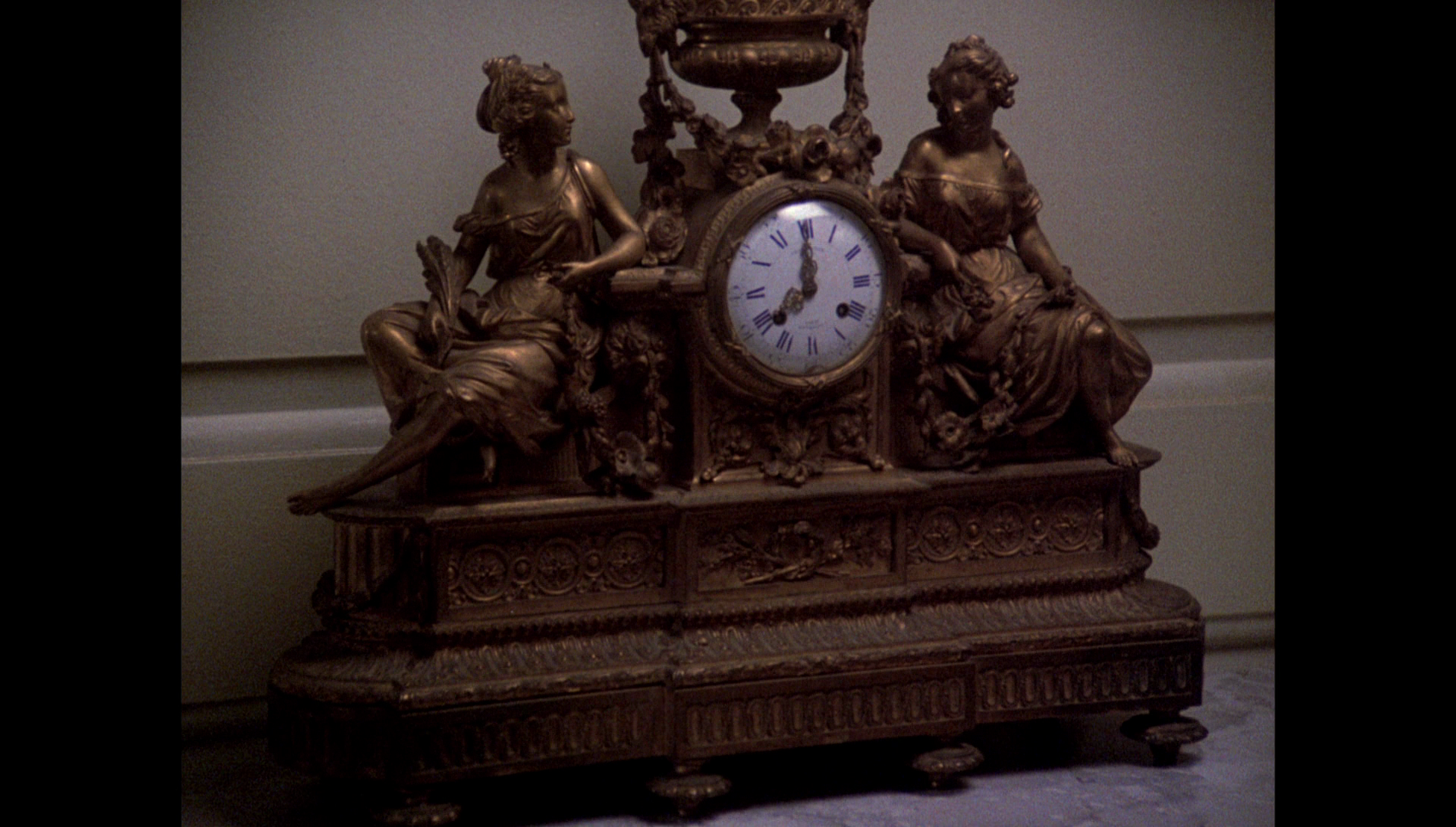
1.78:1 presentation

1.33:1 presentation
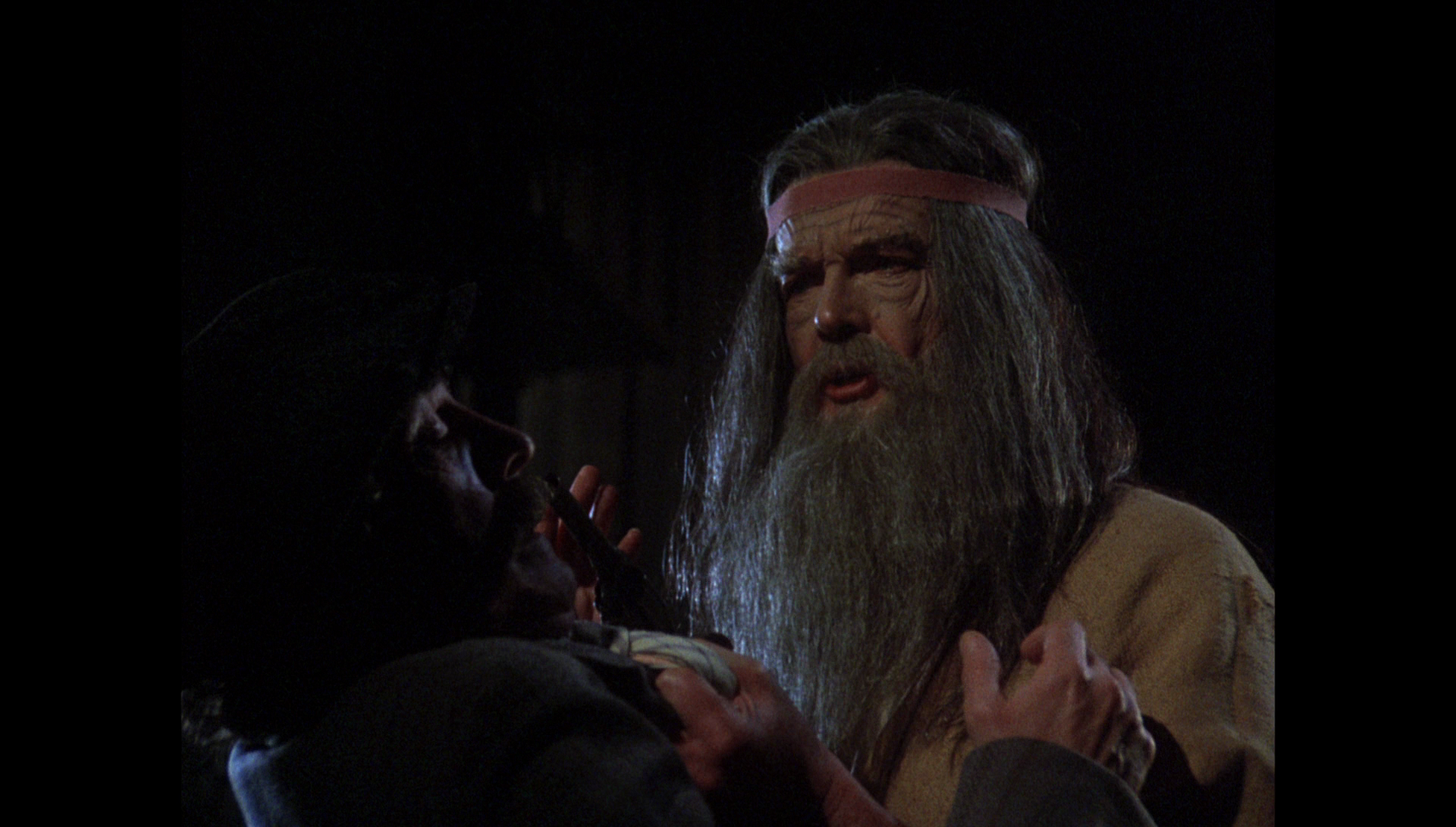
1.78:1 presentation
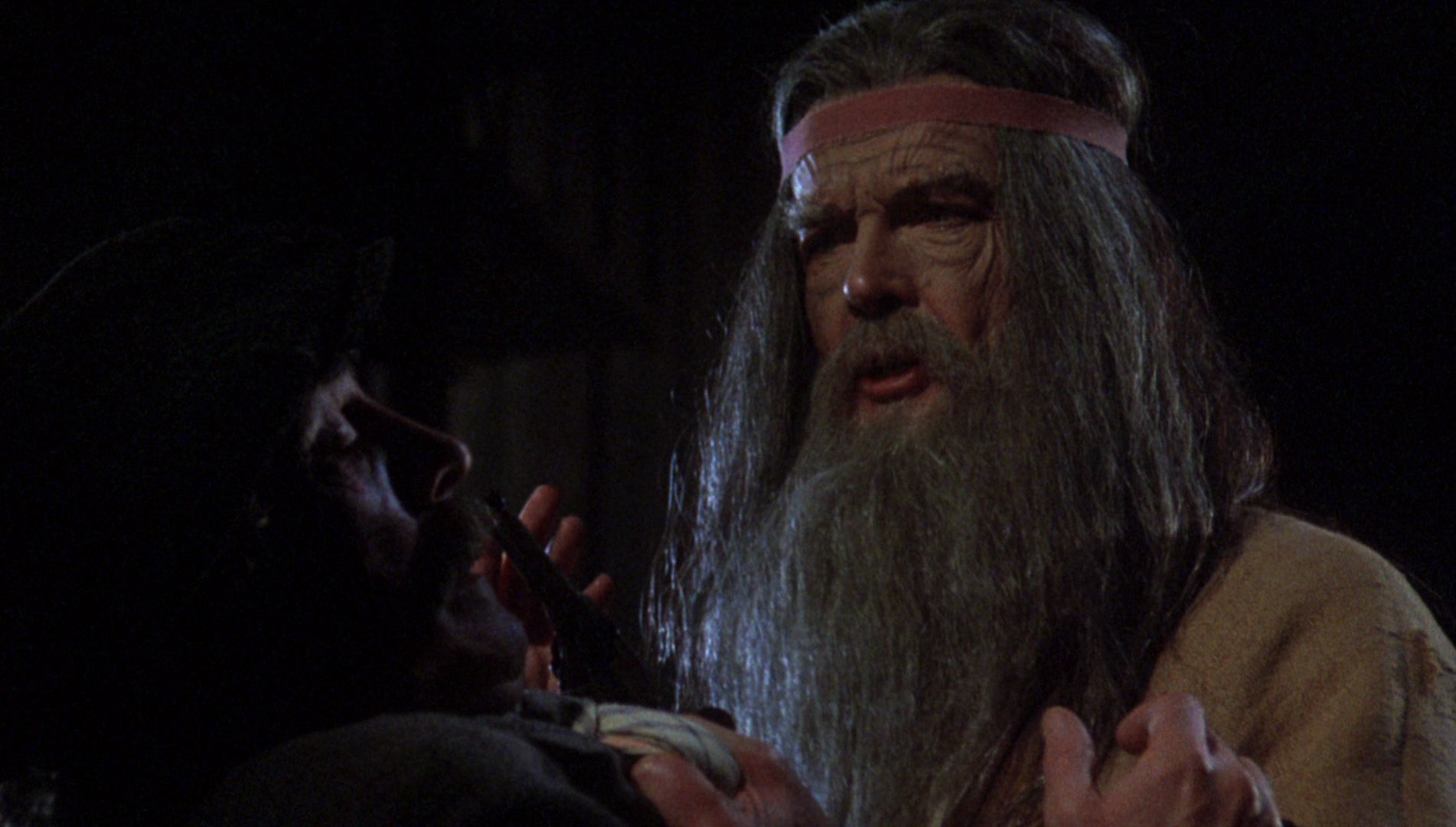
1.33:1 presentation

1.78:1 presentation
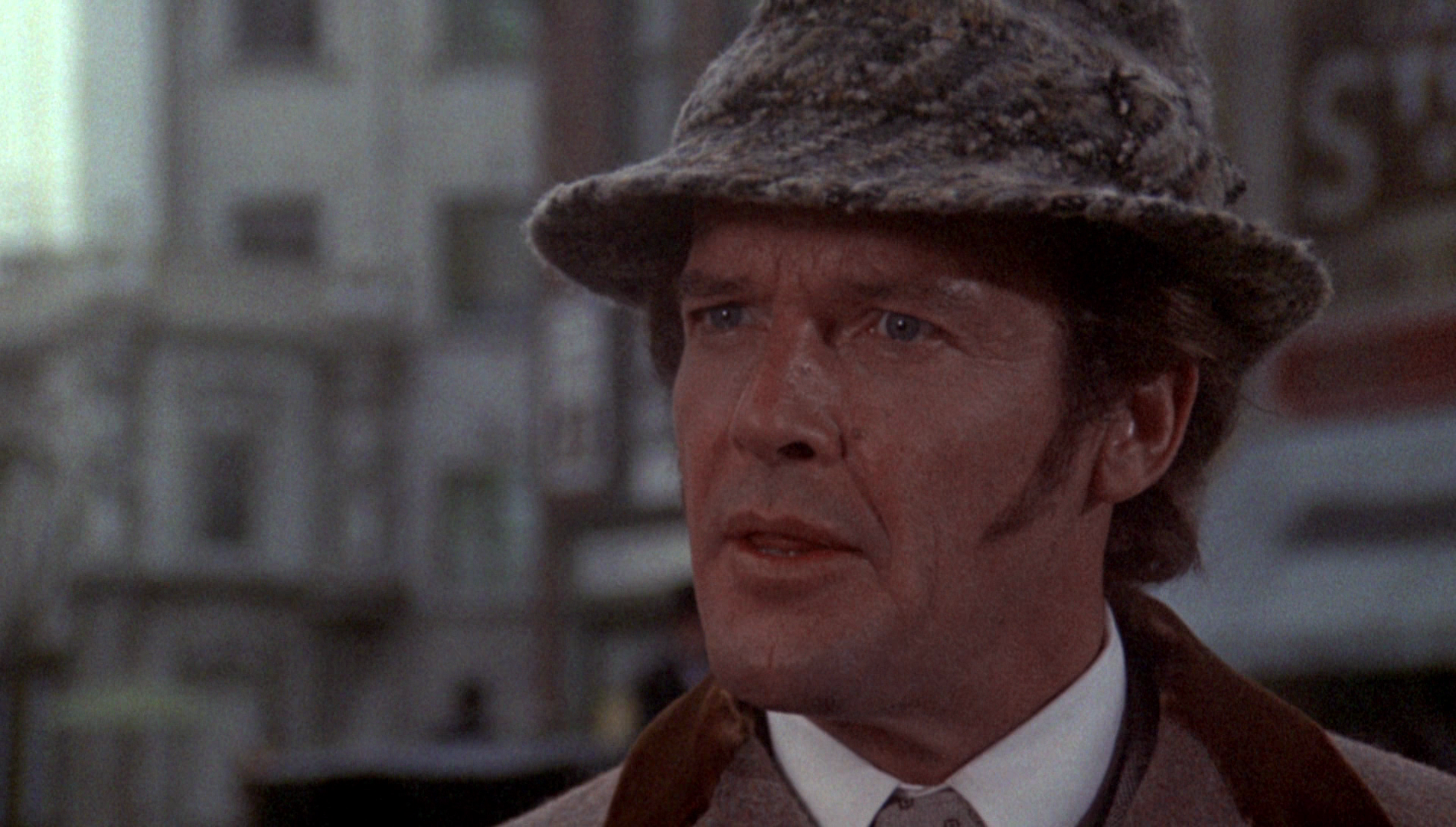


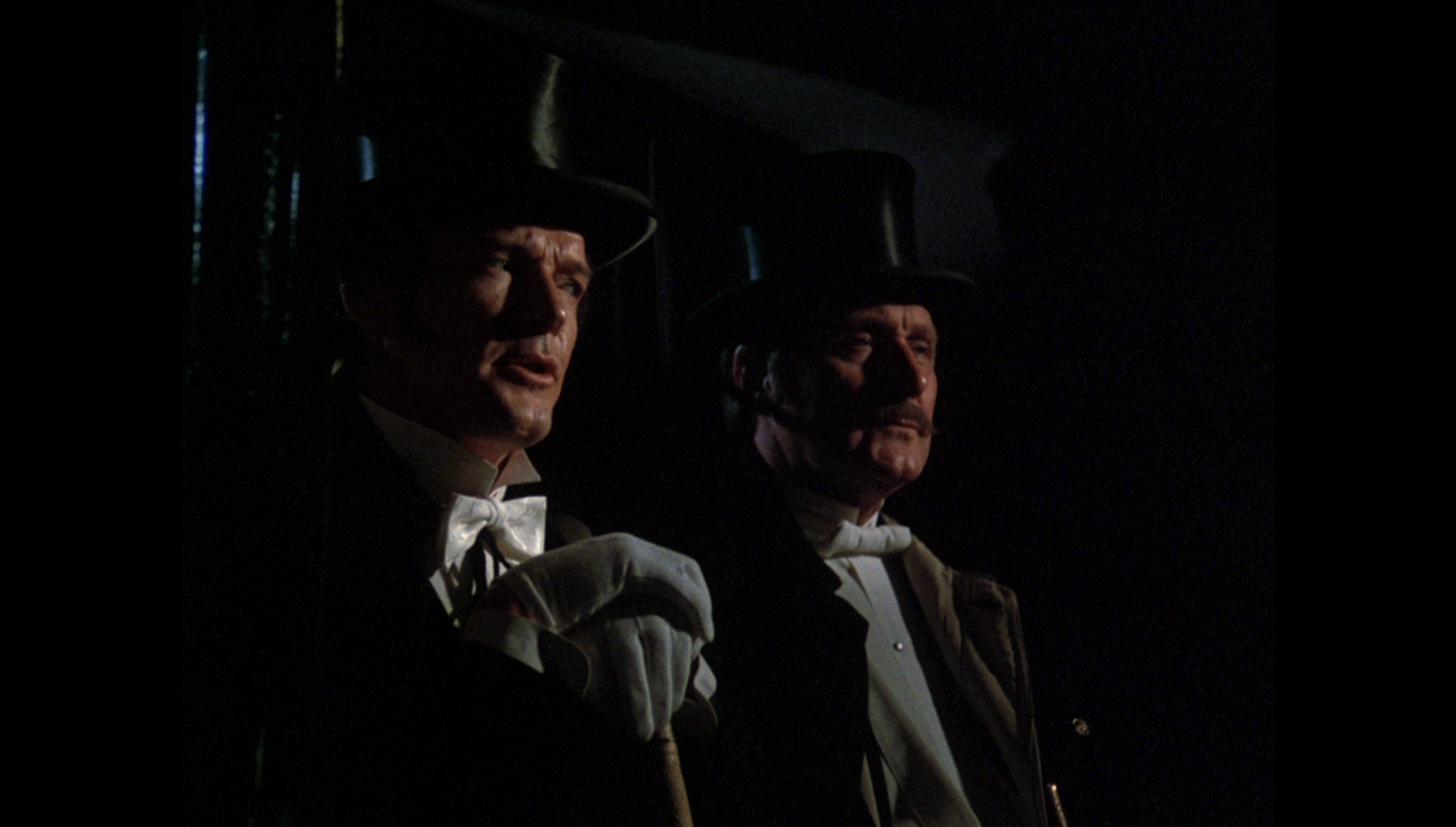
|

